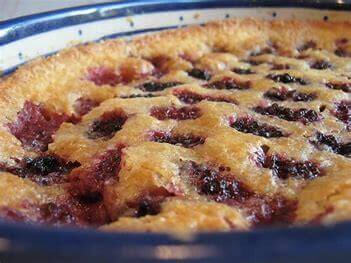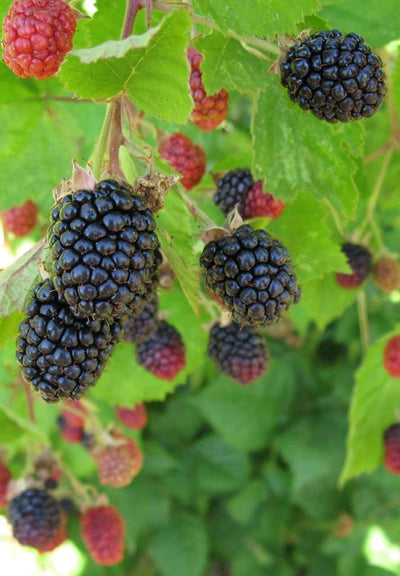A classic treat like blackberry cobbler is always a good choice as people of all ages love it because it has sweet juicy berries and a golden buttery top. If you use fresh blackberries from TN Nursery's Blackberry Plant your pie will be full of flavour and good for you.
- You can also add other fruits like elderberry to your yard and recipes to make them more interesting.
- Homemade Blackberry Cobbler is easy to make and when you use good ingredients, the end result is always great.
- Whether you have never baked before or are an expert gardener, this dessert is a great way to bring your kitchen and yard together.
Adding fresh, hand picked berries to your dish will make it taste better and make your family and friends remember it.
Why Blackberry Cobbler is a Classic Dessert
People love blackberry cobbler because it is easy to make and tastes great. This famous dish is easy to make but still tastes great, unlike complicated desserts that need special tools or methods. The cooked, soft dough soaks up the fruit's sweetness, making a texture that people of all ages enjoy.
- Using blackberry plants from TN Nursery to get fresh berries organically makes the taste better and makes your dessert stand out.
- People who garden at home like to see the clear link between taking care of plants and how they taste, which makes baking even more satisfying.
- Learning how blackberry plants growing can be rewarding for those who are new to gardening.
- If you grow your own berries, you can always get fresh fruit for your best blackberry cobbler. Also, it will be fun to watch a plant grow from a seed or twig to a full grown adult.
Ingredients You Need for the Perfect Blackberry Cobbler
Get these things together to make a tasty Homemade Blackberry Cobbler:
Fresh blackberries from TN Nursery Blackberry Plant
- 1 cup of sugar (adjust to taste)
- 1 cup of all purpose flour
- 1 cup of milk
- 1/2 cup of melted unsalted butter
- 1 tablespoon of baking powder
- A pinch of salt
- A handful of fresh elderberries, if you want to add a different flavour
To make the best blackberry cobbler, you need to use fresh, homegrown berries. Thoughts on growing blackberry plants in pots if you don't have much room in your garden? This way you can enjoy fresh berries all year long.
Step by Step Guide to Making Blackberry Cobbler
1. Heat the oven up
Warm the oven up to 350°F (175°C) and use butter to lightly coat a baking dish. When you use berries from TN Nursery Blackberry Plant, your dessert tastes naturally sweet.
2. Get the batter ready
Put flour, sugar, baking powder and salt in a bowl and mix them together. Add milk and stir until smooth. Melt the butter and put it in the bottom of the baking dish. Then, put the batter on top of it.
3. Put in the Berries
Place the blackberries and, if you want, the elderberries carefully on top of the batter. The berries sink a little as it bakes, making a rich, juicy filling under the golden crust.
4. Make the cobbler
It should be baked for 45 to 50 minutes, or until the crust is golden brown and a knife stuck in the middle comes out clean.
5. Put it out and enjoy it
Take a break and let the cobbler cool down. For a standard dessert, serve it warm with a scoop of vanilla ice cream.
If you follow these easy steps, your Homemade Blackberry Cobbler will taste like it came from a shop. Fresh berries and good baking are always the key.
Tips for the Best Homemade Blackberry Desserts
Use fresh berries. TN Nursery Blackberry Plant fresh blackberries are naturally sweeter and more flavourful than frozen or store bought ones.
- Try container gardening. Growing blackberry plants in pots is easy and works well in small places or on balconies. You can get fresh berries all year long.
- Mix Fruits: To improve the taste and colour, add other berries like elderberries (Elderberry).
- Use Gardening Tips You Can Trust: Experts can help you with dirt, watering, pruning and general plant care on gardening.org and other sites.
- Harvest when fruit is fully ripe: When plants are well taken care of and picked when they are fully ripe, the berries are the sweetest.
These tips will help you keep your plants healthy and make desserts that always taste great. If you grow your own berries, you can always make the best blackberry cobbler.
FAQs
How to make blackberry cobbler?
Do what it says above as you follow the step by step process and the best results come from fresh berries from TN Nursery's Blackberry Plant.
How to care for blackberry plants?
Make sure the soil drains well and give it lots of sun and water it regularly. To get new growth you must prune after harvest.
When to plant blackberry plants?
It's best in early spring or autumn. Make sure the area where you want to plant has full sun and good dirt.
What are blackberry plants?
Blackberry plants are evergreen trees that make dark, tasty berries. They do well in both fields and pots.
When to buy blackberry plants?
Get plants from reputable stores like TN Nursery and do it as early as possible in the spring. Check the product page for tips and advice on how to plant.
Using fresh blackberries to make blackberry cobbler is like blackberry plants growing and baking at the same time. The Blackberry Plant and Elderberry from TN Nursery help you grow tasty, healthy foods while also making your garden look better. This is a standard dessert that everyone will love, whether it's for a family get together or a quiet afternoon treat.



